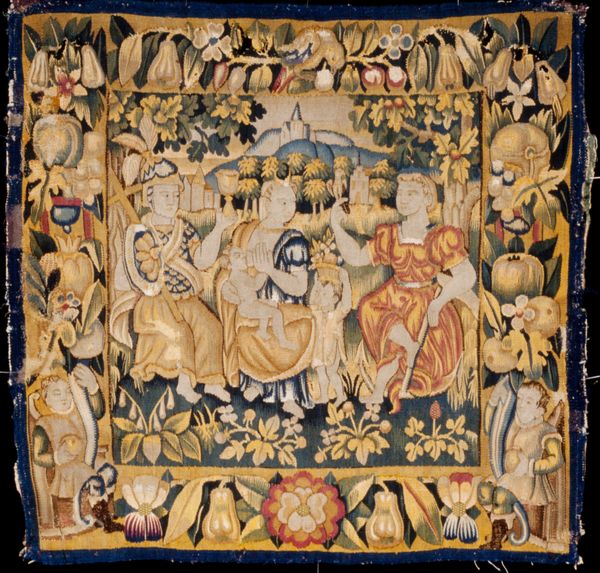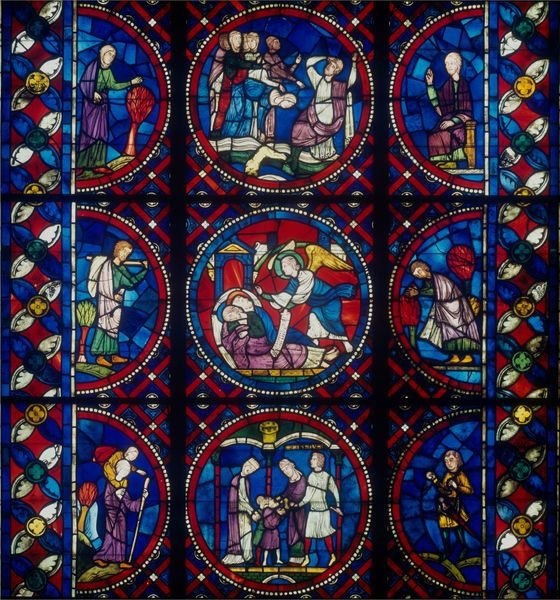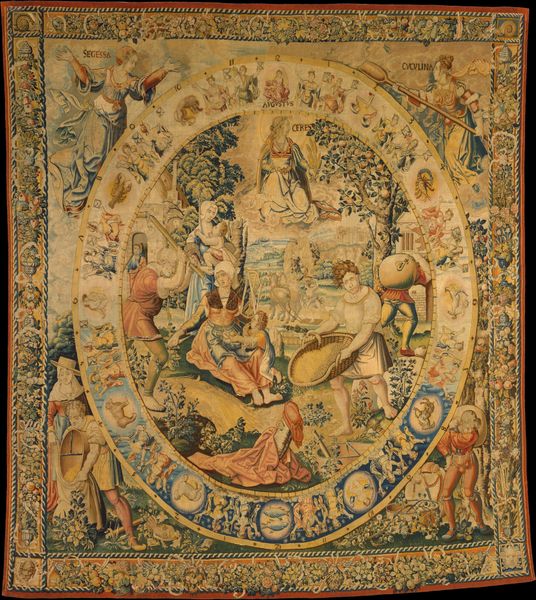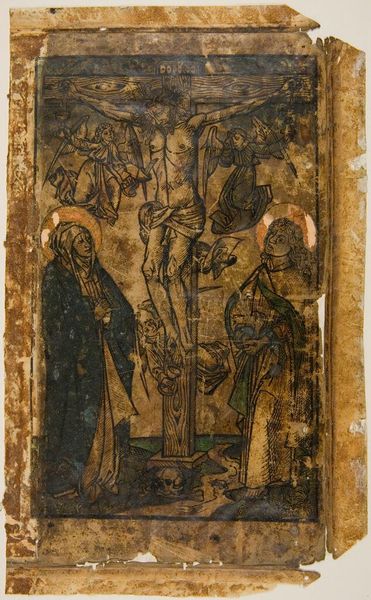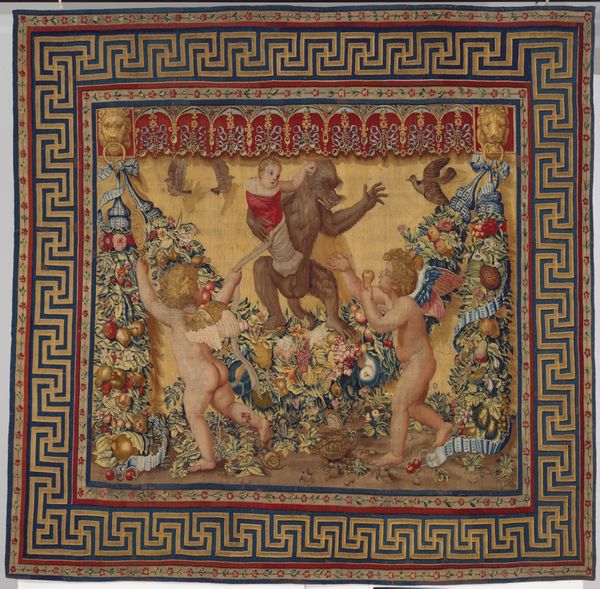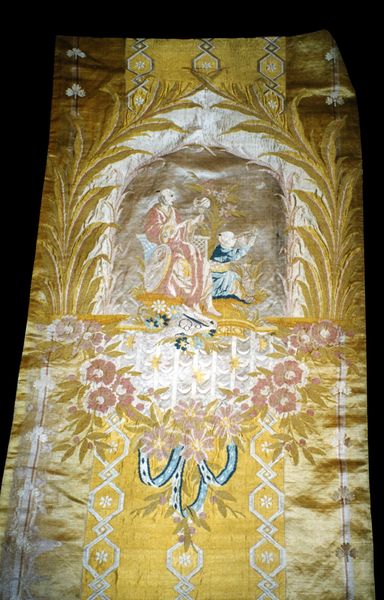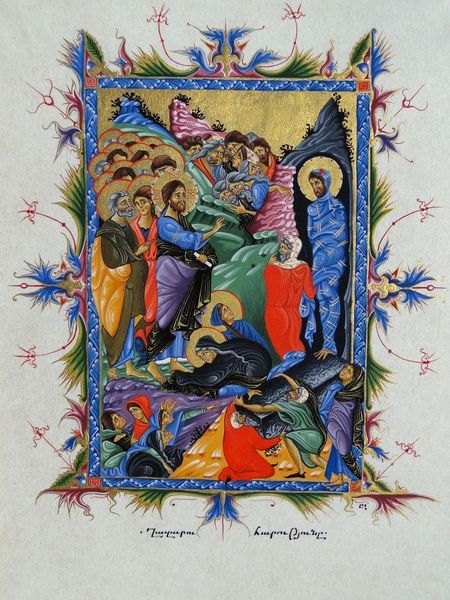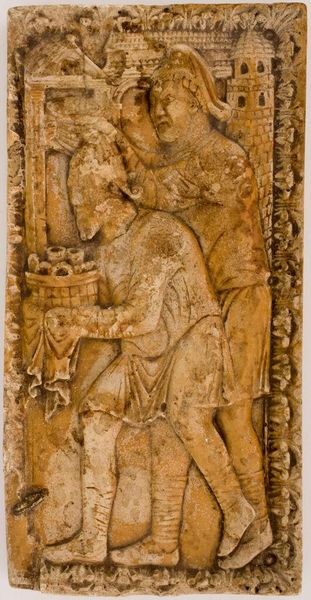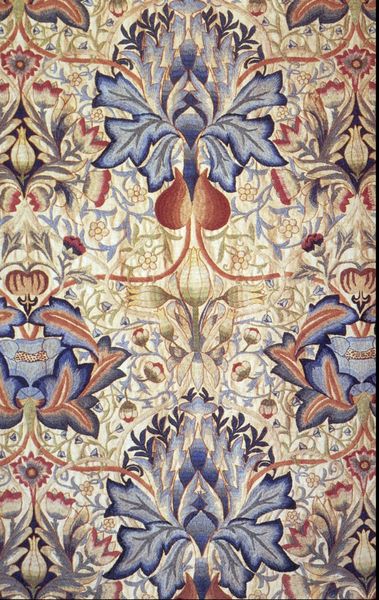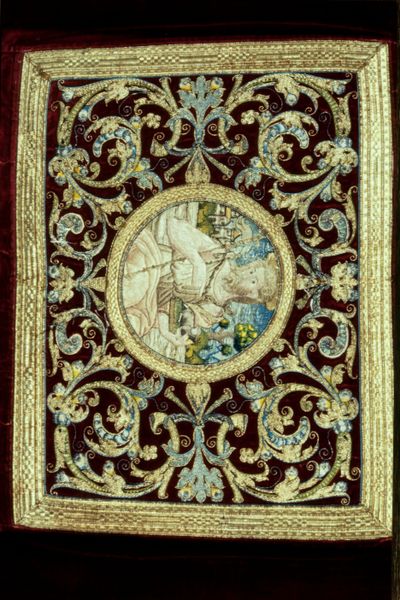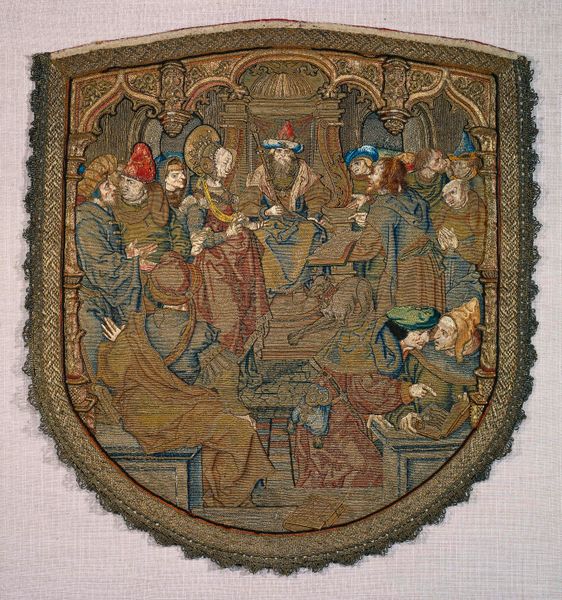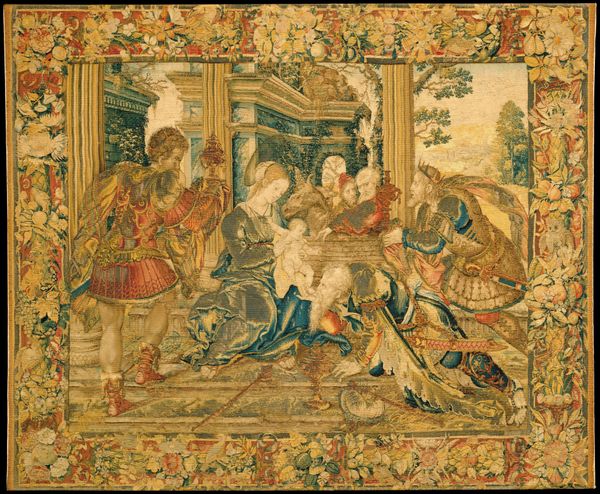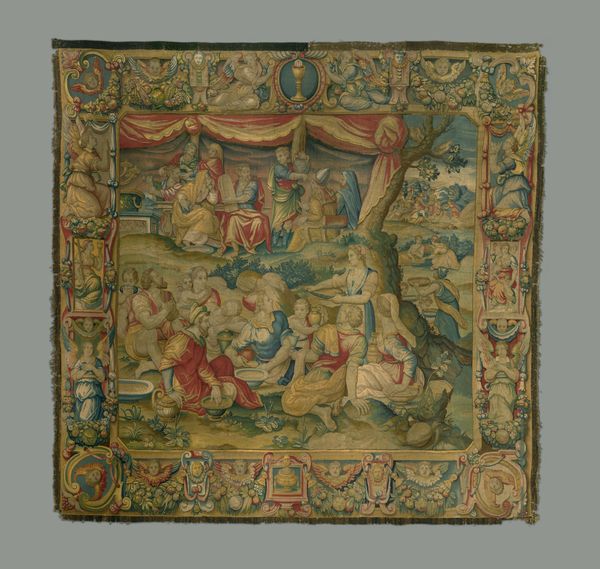
mixed-media, textile
#
mixed-media
#
narrative-art
#
textile
#
figuration
#
crucifixion
#
history-painting
#
decorative-art
#
early-renaissance
#
mixed media
#
christ
Dimensions: Overall (confirmed 11/13/07): 98 1/2 x 100 3/4 in. (250.2 x 255.9 cm); Overall (unknown date): 99 x 98 in. (251.5 x 248.9 cm); Slat: 100” x 3 ½” x 1” with Velcro/webbing, security straps
Copyright: Public Domain
Editor: So this tapestry, “The Crucifixion” by Bernard van Orley, dating from the early 16th century… It’s such a densely packed image. You've got the central crucifixion scene, but then also all these surrounding figures, almost overwhelming in their emotion. What aspects of the society and history of this era come to mind when you view a piece like this? Curator: The overwhelming nature of it, I think, is key. It speaks to the tapestry's function. Tapestries were incredibly valuable objects in the early Renaissance, markers of wealth and power. Imagine this hanging in a grand hall – it’s not just a devotional image, it's a demonstration of status. How do you think that affected its production and consumption? Editor: I guess it would make the commissioners want something impressive and grand to flaunt to their visitors, impacting not only the scale but also the visual complexity... So it’s art performing a political function. Curator: Exactly. Think about who could commission such a piece. Wealthy merchants, nobles, the Church itself. And the narrative, The Crucifixion, is not merely religious. It's deeply political. It reflects on power, sacrifice, and the established social order. Van Orley was working for the Habsburg court. How might the Habsburgs have used images like this to reinforce their legitimacy? Editor: By connecting themselves, implicitly, to the concepts of divine right and Christian virtue. The tapestry becomes propaganda, in a way. Curator: Precisely. The emotionality is not just artistic flair; it's carefully crafted to elicit specific responses – reverence, loyalty, perhaps even fear. The piece then encourages us to understand it not only through an artistic or religious perspective, but also as evidence of cultural power. Editor: I see that now. It’s more than just a beautiful artwork. Thinking about the patronage shifts my perspective. Thanks! Curator: My pleasure. And now you can also appreciate how the museum displays these objects as evidence of cultural change, of an object from the past having many lives of interpretations.
Comments
No comments
Be the first to comment and join the conversation on the ultimate creative platform.
